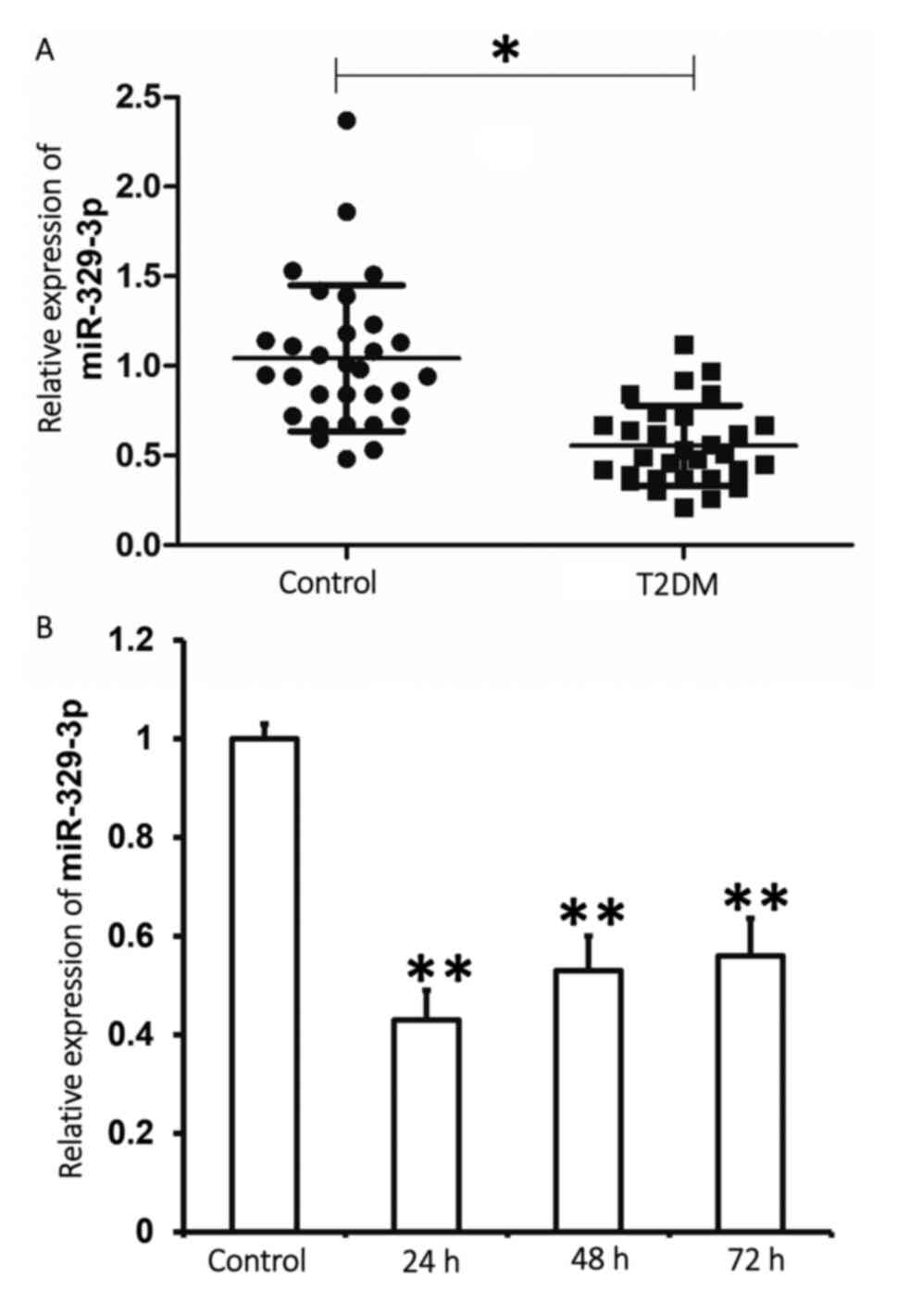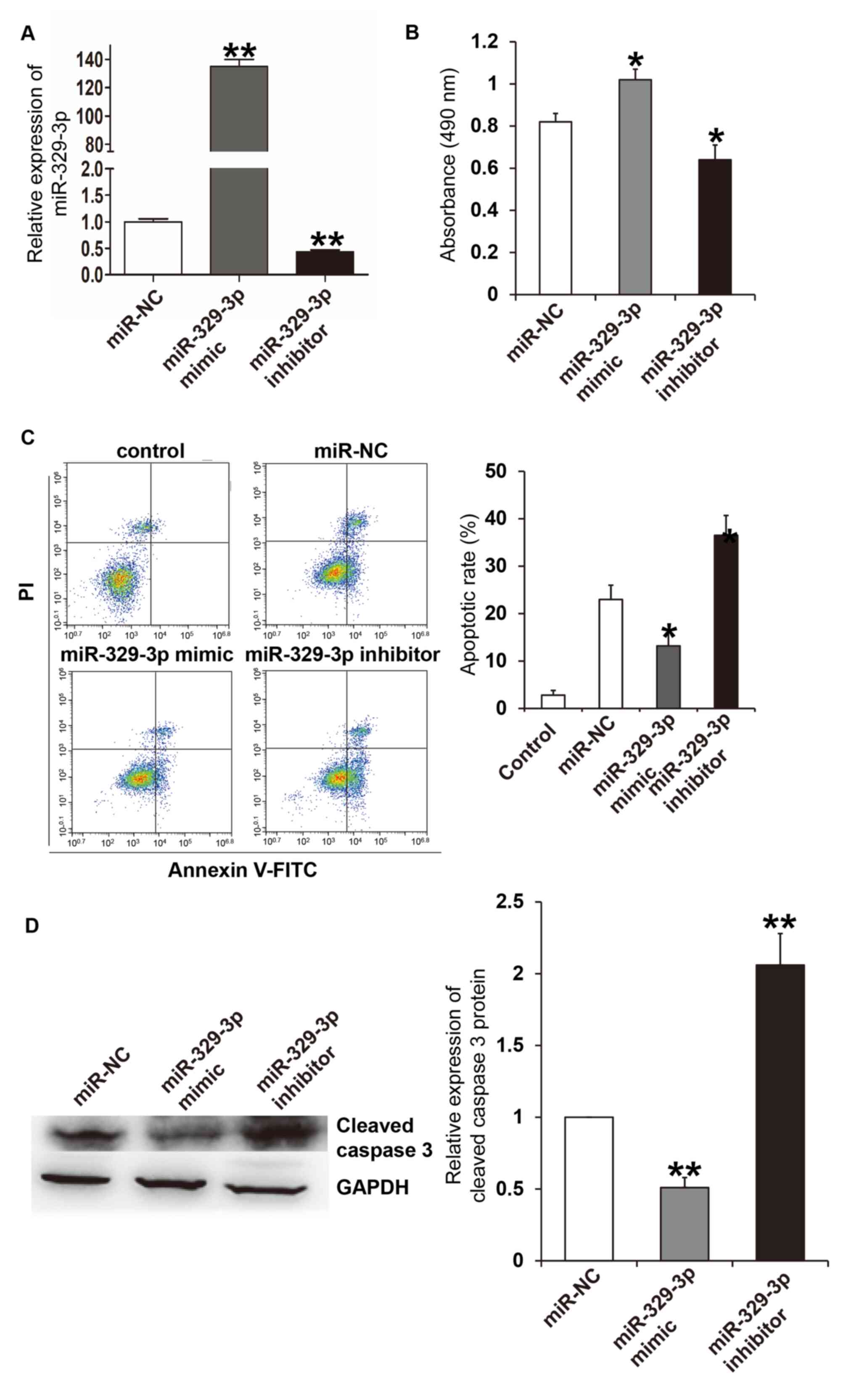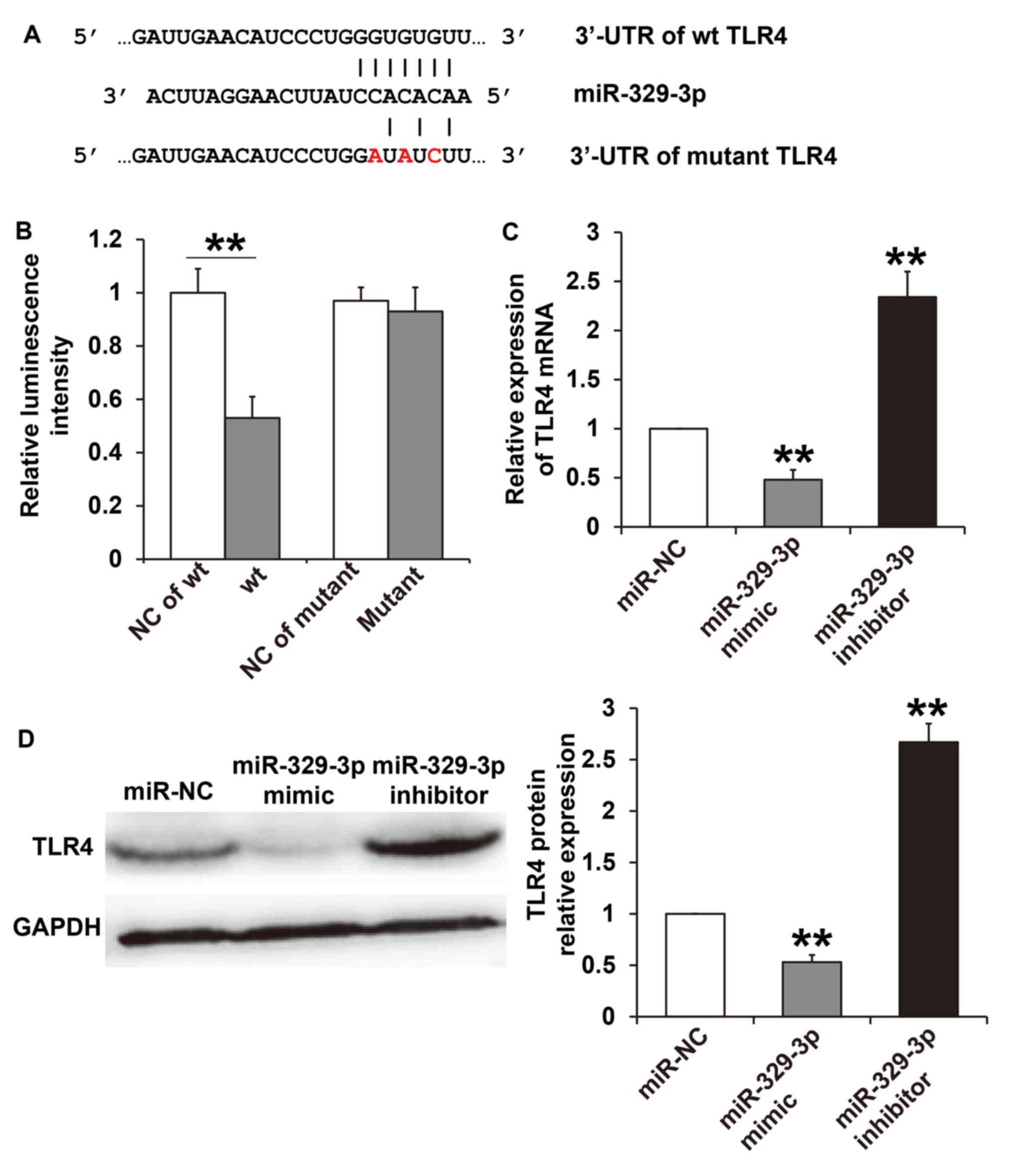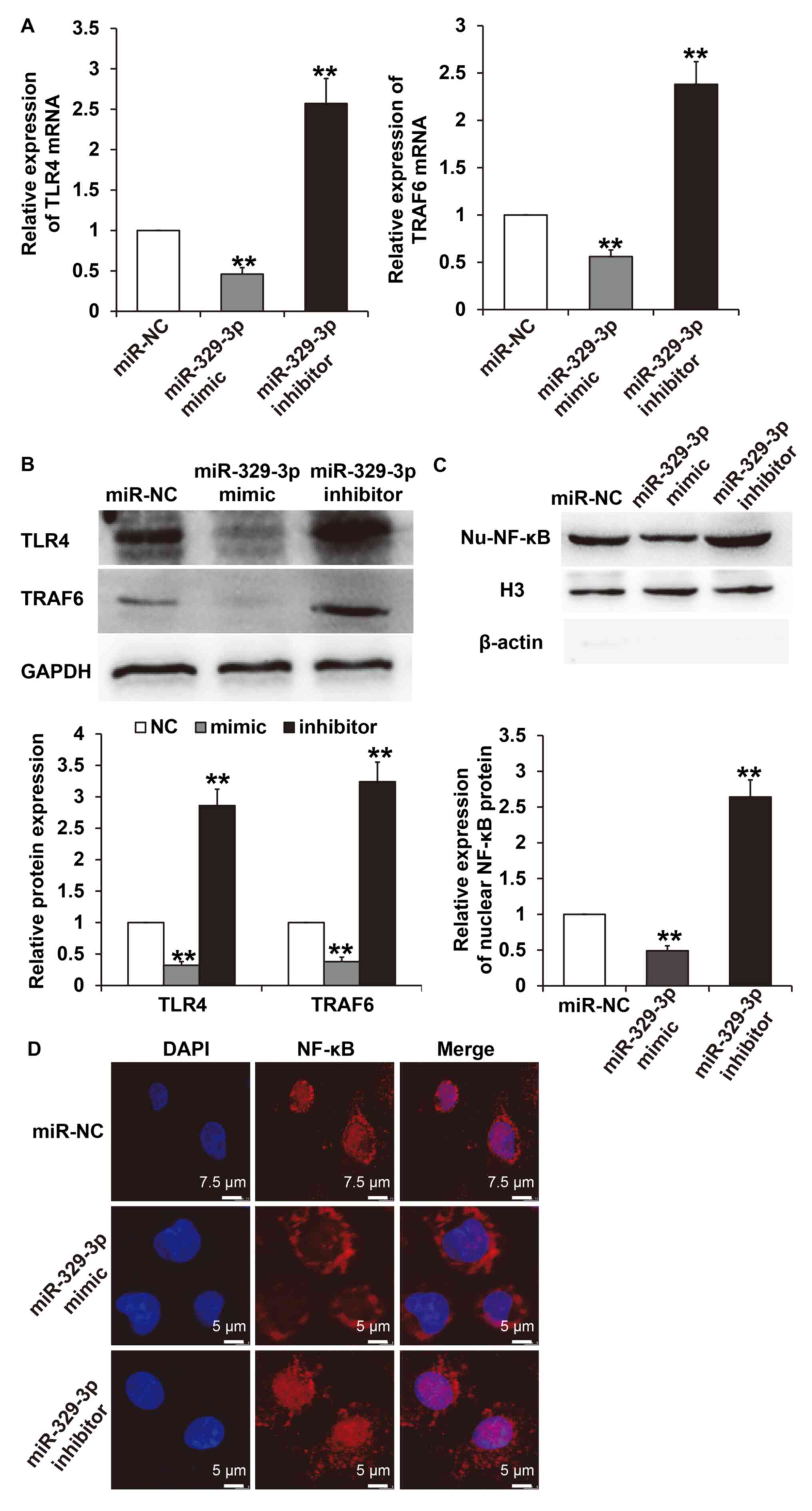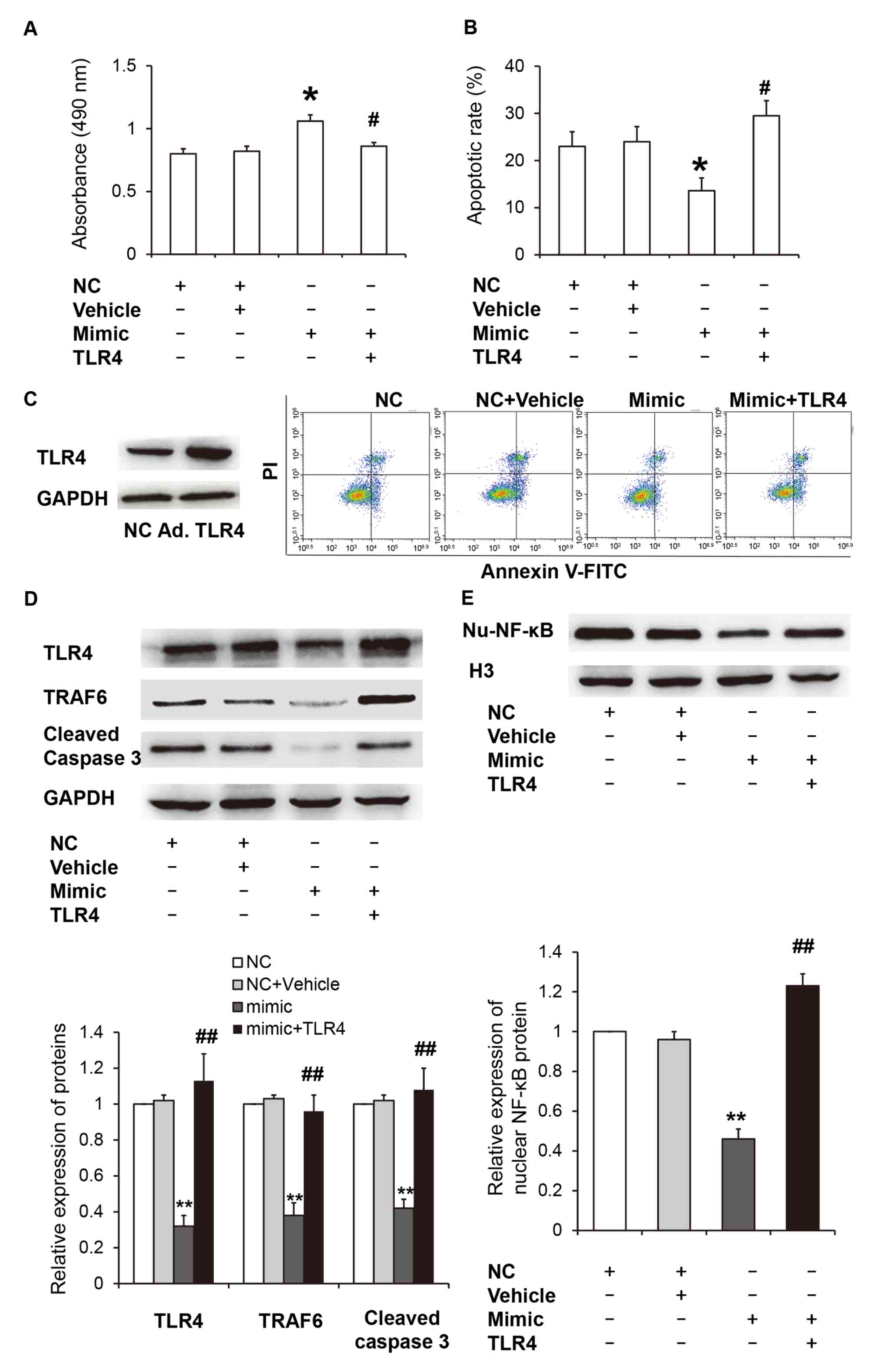|
1
|
Hurlow JJ, Humphreys GJ, Bowling FL and
McBain AJ: Diabetic foot infection: A critical complication. Int
Wound J. 15:814–821. 2018.PubMed/NCBI View Article : Google Scholar
|
|
2
|
Knapp M, Tu X and Wu R: Vascular
endothelial dysfunction, a major mediator in diabetic
cardiomyopathy. Acta Pharmacol Sin. 40:1–8. 2019.PubMed/NCBI View Article : Google Scholar
|
|
3
|
Eelen G, de Zeeuw P, Simons M and
Carmeliet P: Endothelial cell metabolism in normal and diseased
vasculature. Circ Res. 116:1231–1244. 2015.PubMed/NCBI View Article : Google Scholar
|
|
4
|
Nakagami H, Kaneda Y, Ogihara T and
Morishita R: Endothelial dysfunction in hyperglycemia as a trigger
of atherosclerosis. Curr Diabet Rev. 1:59–63. 2005.PubMed/NCBI View Article : Google Scholar
|
|
5
|
Mirra P, Raciti GA, Nigro C, Fiory F,
D'Esposito V, Formisano P, Beguinot F and Miele C: Circulating
miRNAs as intercellular messengers, potential biomarkers and
therapeutic targets for Type 2 diabetes. Epigenomics. 7:653–667.
2015.PubMed/NCBI View Article : Google Scholar
|
|
6
|
Hou LJ, Han JJ and Liu Y: Up-regulation of
microRNA-503 by high glucose reduces the migration and
proliferation but promotes the apoptosis of human umbilical vein
endothelial cells by inhibiting the expression of insulin-like
growth factor-1 receptor. Eur Rev Med Pharmacol Sci. 22:3515–3523.
2018.PubMed/NCBI View Article : Google Scholar
|
|
7
|
Hui Y and Yin Y: MicroRNA-145 attenuates
high glucose-induced oxidative stress and inflammation in retinal
endothelial cells through regulating TLR4/NF-kappaB signaling. Life
Sci. 207:212–218. 2018.PubMed/NCBI View Article : Google Scholar
|
|
8
|
Seitz H, Royo H, Bortolin ML, Lin SP,
Ferguson-Smith AC and Cavaille J: A large imprinted microRNA gene
cluster at the mouse Dlk1-Gtl2 domain. Genome Res. 14:1741–1748.
2004.PubMed/NCBI View Article : Google Scholar
|
|
9
|
Benetatos L, Hatzimichael E, Londin E,
Vartholomatos G, Loher P, Rigoutsos I and Briasoulis E: The
microRNAs within the DLK1-DIO3 genomic region: Involvement in
disease pathogenesis. Cell Mol Life Sci. 70:795–814.
2013.PubMed/NCBI View Article : Google Scholar
|
|
10
|
Welten SM, Bastiaansen AJ, de Jong RC, de
Vries MR, Peters EA, Boonstra MC, Sheikh SP, La Monica N,
Kandimalla ER, Quax PH and Nossent AY: Inhibition of 14q32
MicroRNAs miR-329, miR-487b, miR-494, and miR-495 increases
neovascularization and blood flow recovery after ischemia. Circ
Res. 115:696–708. 2014.PubMed/NCBI View Article : Google Scholar
|
|
11
|
Wang P, Luo Y, Duan H, Xing S, Zhang J, Lu
D, Feng J, Yang D, Song L and Yan X: MicroRNA 329 suppresses
angiogenesis by targeting CD146. Mol Cell Biol. 33:3689–3699.
2013.PubMed/NCBI View Article : Google Scholar
|
|
12
|
Vaure C and Liu YL: ‘A comparative review
of toll-like receptor 4 expression and functionality in different
animal species’. Front Immunol. 5(316)2014.PubMed/NCBI View Article : Google Scholar
|
|
13
|
Hu L, Yang H, Ai M and Jiang S: Inhibition
of TLR4 alleviates the inflammation and apoptosis of retinal
ganglion cells in high glucose. Graefes Arch Clin Exp Ophthalmol.
255:2199–2210. 2017.PubMed/NCBI View Article : Google Scholar
|
|
14
|
Ye EA and Steinle JJ: miR-146a attenuates
inflammatory pathways mediated by TLR4/NF-κB and TNFα to protect
primary human retinal Microvascular endothelial cells grown in high
glucose. Mediators Inflamm. 2016(3958453)2016.PubMed/NCBI View Article : Google Scholar
|
|
15
|
Zhang TH, Huang CM, Gao X, Wang JW, Hao LL
and Ji Q: Gastrodin inhibits high glucose-induced human retinal
endothelial cell apoptosis by regulating the SIRT1/TLR4/NF-κBp65
signaling pathway. Mol Med Rep. 17:7774–7780. 2018.PubMed/NCBI View Article : Google Scholar
|
|
16
|
Livak KJ and Schmittgen TD: Analysis of
relative gene expression data using real-time quantitative PCR and
the 2 (-Delta Delta c(T)) method. Methods. 25:402–408.
2001.PubMed/NCBI View Article : Google Scholar
|
|
17
|
Wang X, Lu X, Zhang T, Wen C, Shi M, Tang
X, Chen H, Peng C, Li H, Fang Y, et al: mir-329 restricts tumor
growth by targeting grb2 in pancreatic cancer. Oncotarget.
7:21441–21453. 2016.PubMed/NCBI View Article : Google Scholar
|
|
18
|
Jiang W, Liu J, Xu T and Yu X: MiR-329
suppresses osteosarcoma development by downregulating Rab10. FEBS
Lett. 590:2973–2981. 2016.PubMed/NCBI View Article : Google Scholar
|
|
19
|
Li Z, Yu X, Wang Y, Shen J, Wu WK, Liang J
and Feng F: By downregulating TIAM1 expression, microRNA-329
suppresses gastric cancer invasion and growth. Oncotarget.
6:17559–17569. 2015.PubMed/NCBI View Article : Google Scholar
|
|
20
|
Xiao B, Tan L, He B, Liu Z and Xu R:
MiRNA-329 targeting E2F1 inhibits cell proliferation in glioma
cells. J Transl Med. 11(172)2013.PubMed/NCBI View Article : Google Scholar
|
|
21
|
Gordon S: Pattern recognition receptors:
Doubling up for the innate immune response. Cell. 111:927–930.
2002.PubMed/NCBI View Article : Google Scholar
|
|
22
|
Devaraj S, Dasu MR, Rockwood J, Winter W,
Griffen SC and Jialal I: Increased toll-like receptor (TLR) 2 and
TLR4 expression in monocytes from patients with type 1 diabetes:
Further evidence of a proinflammatory state. J Clin Endocrinol
Metab. 93:578–583. 2008.PubMed/NCBI View Article : Google Scholar
|
|
23
|
Dasu MR, Devaraj S, Park S and Jialal I:
Increased toll-like receptor (TLR) activation and TLR ligands in
recently diagnosed type 2 diabetic subjects. Diabetes Care.
33:861–868. 2010.PubMed/NCBI View Article : Google Scholar
|
|
24
|
Garibotto G, Carta A, Picciotto D, Viazzi
F and Verzola D: Toll-like receptor-4 signaling mediates
inflammation and tissue injury in diabetic nephropathy. J Nephrol.
30:719–727. 2017.PubMed/NCBI View Article : Google Scholar
|















